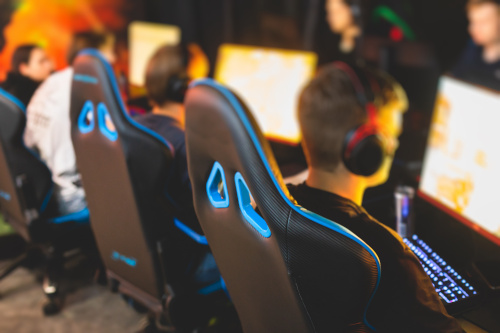Esports is a hot topic in higher education, from recruiting esports athletes, to helping to prepare the future workforce for a multitude of jobs in this more than $1 billion industry. Esports has pretty much exploded on college campuses in the last 10 years–and for good reason. According to Insider Intelligence, it is estimated there will be more than 29 million monthly esports viewers in the U.S. this year. With this amazing growth at the college level, it is bound to trickle down into K-12 education.
For higher education institutions, there have been many benefits of creating successful esports programs. It’s a great way to recruit students, increase engagement, and showcase potential career opportunities. It’s also a great way to connect students who may not have had any interest in other extracurricular activities on campus.
As more K-12 schools and districts start to consider esports, there is often the question of how best to bring it to their students–especially if they don’t have the budget or resources to create an arena like the ones seen on TV.
Thinking you have to, as they say, “go big or go home” is a common misconception about setting up an esports program, especially because it is a newer industry and there isn’t much background on how to get programs started at a school. While it might seem like there’s a lot to do or purchase to start an esports program, it really just comes down to three things: technology that is often already available, the “arena” or a space to house the team, and people.
The technology
Many might think technology would be a barrier when it comes to creating an esports club or league, but it comes down to four pieces of technology: computers, internet, headsets, and interactive or non-interactive classroom displays. A high-end computer isn’t necessary; it just needs to be reliable and do basic functions, and that’s the same with the internet. Reliability is the most important factor so students don’t get disconnected during gameplay. A good quality headset is probably the most important part of playing so players can tune out other noises in the room and teammates can collaborate as they play.
Having a projector display offers teams a large, affordable, and potentially collaborative experience from a single device, whether it’s watching players in action or instructing and annotating on lessons. Static displays can be used to watch live feeds and playback gameplay for review and critique. Interactive displays allow teams to work together to make notes on content and playbooks and stop video to annotate for coaching purposes.
These technologies are often already available in a school building and they can be utilized after school hours like other sports programs.
The “arena”
People typically think of esports programs as having some kind of an arena or theater for practicing or events, but it is totally unnecessary. There are many spaces already within a school or campus that can be utilized for hosting an esports team or club. Schools can utilize a media center, for instance. Many higher education institutions, including the esports program at Fresno State, one of the top esports programs in the nation, set up their esports program in a regular classroom and don’t see the need for something high-end.
Once those planning for esports realize they don’t need a fancy space, it is much easier to envision where an esports program will take place.
The people
The people involved in esports are the third spoke in a successful program. A school first needs to find a faculty member, parent volunteer, or coach who it is willing to support the program.
And, just like other sports programs or clubs in a school, once students get wind of an esports team starting at a school, schools will be surprised by how many students want to participate. Schools can add jobs like videographer, announcer, and marketer to the team as well to help share competitions with the student body.
The future of esports
When people think of esports, they typically think of the players. It is much bigger than that, however. There are so many opportunities for students to get involved in esports beyond playing. For students interested in math, there are opportunities as game analysts. Or for students interested in journalism, there are opportunities as broadcast reporters.
So many schools are introducing esports programs, not just because of the initial benefits such as teamwork-building skills, communication skills, and problem-solving skills, but because the industry is continuing to grow and the potential career opportunities are everywhere for students.
- Using universal screening to improve student well-being - April 22, 2024
- 3 ways to avoid summer learning loss - April 19, 2024
- High school students say AI will change the workforce - April 18, 2024


